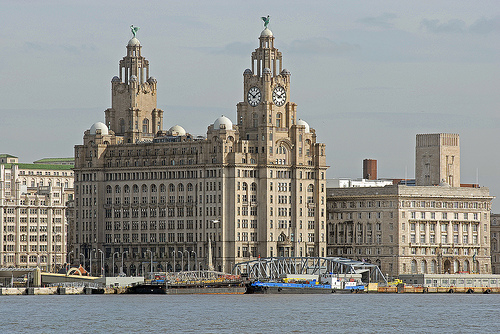In this presentation, Gary Klein shares important information about air source heat pump water heaters (HPWH), with particular attention paid to where the warm air comes ...
The First Radiant Heating Jobs

Each morning, when I sit at my desk, I give a moment’s thought to the broken copper pipes that are buried in the concrete slab just below my feet. The guy who lived here before us abandoned that old radiant system in 1970, just 20 years after the crew had hastily installed it. We live in one of those houses built during the Levittown era. Levitt put up 17,000 houses in a year and a half (that’s 30 houses a day) and I don’t believe he was thinking too much about the details of the floor-heating systems. They went in fast and they were cheap, and both of those things were very good. We now have baseboard radiators.
I think about those long-gone installers, though. Imagine working that quickly? You put the pipes on the ground and you pour the concrete. Done.
I also think about the other long-gone people who designed and installed those earliest radiant systems, both here and across the ocean. There were the Romans and their hypocausts, of course. You’ve probably heard that they were the first ones to think radiant. I see remnants of those systems whenever I’m in Europe. You can’t wander far over there without stumbling into a Roman ruin or two. They put up stone walls and floors and left spaces behind and beneath them, through which they vented their fires. Make a rock hot and it stays hot for a good long time.
The Chinese were doing a similar thing back then with their kang heaters, and much of rural China still uses these stone tables to stay warm. A kang is a raised stone platform with a space below for the hot gases to pass to a chimney. During the day, they use the platform as a sitting- and dining area. At night, they put away the chopsticks and spread out the bedrolls. Kang heaters worked well enough to stick around for thousands of years. Got something today that’s going to stick around that long?
In 1965, when the Beatles left Liverpool for New York City to play that big concert at Shea Stadium, the Liverpool Cathedral had just been completed. This place looks like it’s been there since the Middle Ages, but they only started working on it in 1920 and had to pause for World War II, which is understandable. They chose a radiant heating system for the cathedral in 1920, and that makes it one of the oldest of the modern radiant era. It’s similar to the Roman hypocaust, but instead of venting products of combustion under the floor, they heat air and circulate that through stone ductwork just below the surface. It gets the job done. I read where 36 hours after shutting off the oil burners, the temperature in the cathedral had dropped by only one degree Fahrenheit. Hot rocks rock.
Another thing they learned with the cathedral was that radiant systems don’t heat the air within the spaces they serve. That saves fuel because the air temperature at the ceiling doesn’t get that hot, so there’s less heat loss through the roof. At one point, they measured the temperatures four feet above the floor and 97 feet above the floor. There was only a one-and-a-half-degree difference between the two elevations. Hardly any convection at all.
Liverpool is a great place for radiant-heating history. There’s a huge building on the River Mersey (think Gerry and the Pacemakers) called the Royal Liver Building. It's in the photo up above. This place opened in 1911 and it had 119,000 square feet of radiant walls. Big enough for you? It was also the world's first reinforced-concrete building. This best part of this story is that the circulator for hot-water heating systems won't arrive until 1928. So we we have this enormous hydronic radiant-heating system that was, most likely, running on big De Laval, horizontal-split, circulating pumps, which took their power from a turbine drive, running off the waste steam from the lighting plant .
And those radiant panels looked a lot like the European panel radiators of today, but they were actually metal trays that contained hot-water pipes. They filled the trays with the same stuff they used to finish the floors, a stone-like material called durato,which was similar to terrazzo. Once again, it’s all about hot rocks. That system served the huge building until 1970, when they replaced the radiant panels with modern panel radiators.
The following year, over in London, the Brits opened the Third Church of Christ Scientist, which had radiant pipes in the ceiling. That was a first. And that same year, they also put hot-water pipes into the domed, plaster ceiling of the new Bank of England, also in London. They ran 180-degree water though those pipes, which is not something you can do with a radiant floor.
Well, actually you can do it (and I’ve seen it done) because this is America and many of us do what we want to do. It’s just not going to be one of your better ideas.
But I digress.
Speaking of America, not to be radiantly outclassed (even though we had to wait a couple of decades), our first modern hydronic radiant system arrived in 1930 and it was also a ceiling system. Are you surprised to learn that the Brits were again responsible? They installed this system in their lovely embassy in Washington D.C. A few years ago, I was doing a seminar in the area and one of the guys taking the class told me that he had recently worked on that system. I like to think it’s still up and running. I’d also like to confirm this by calling the embassy and inquiring about their current HVAC system, but in these wacky times, that might cause Daniel Craig to show up at my house.
In 1933, and again in England, scientists discovered (and by delightful accident) a new plastic they decided to call polyethylene. They had been super-pressurizing chemicals in an autoclave when the whole works blew up, leaving behind a destroyed laboratory, some very surprised scientists, and polyethylene. Unable to make the stuff again under normal conditions, they decided to repeat the explosion and Whoop! there it was.
Turns out it was the introduction of oxygen while at high pressure that created the magic and polyethylene went on to play a large role in the laying of undersea cables and the development of radar, which really helped out a lot during the Battle of Brittan.
After the war, a number of companies tried using polyethylene tubing in place of copper for buried radiant systems. It seemed like a natural replacement for copper but the problem with polyethylene is that it’s a thermoplastic, which means it gets mushy when heated. That goes against the whole concept of radiant heating. Also, the radiant-system controls of the time were crude three-way valves that sometimes got stuck in the too-hot position and that made most installers shy away from plastic pipe.
With one grand exception, that is. I have an intriguing magazine article from 1957 that asks the question: Plastic Pipe – Is it Practical for Panel Heat. The article gives all the pros and cons and then tells the story of a plastic-pipe, snowmelt system that Bell & Gossett had just installed under one of the sidewalks at their Morton Grove, Illinois plant.
When I first read this, my heart pumped faster because if that system is still in operation it would probably be the oldest plastic-based radiant system in America, and possibly the world. So I called a friend at B&G and he asked around. Turns out no one knew. I sent them the article. They asked around some more. They called retired people. They looked all over the place for old records and files. Nothing. If it’s still there, no one knows where it is.
Doesn’t that just make you want to show up in Morton Grove with a pickaxe?
But back to the Beatles. 1965 rolled around and they were heading for Shea Stadium, and as they were, Thomas Engel was getting a patent for a brand-new type of plastic. He called the new stuff PEX. It was an improved version of polyethylene. Thomas Engel had found a way to get the carbon atoms in polyethylene to hold hands with each other, which stopped the material from getting mushy when heated. Eureka!
In 1990, I sat in an auditorium in Sweden and listened to Thomas Engel tell the story about how he had first come up with the idea of making pipe from PEX by talking to his neighbor, who raised chickens. It seems the chickens were pooping on the steel radiant pipe that ran under their coops, and the steel did not like this. So the farmer asked Thomas Engel to make some pipes out of PEX so that when the chicken pooped on the PEX pipe the PEX pipe wouldn’t pop.
And in this way, history, and PEX pipe, got made.
Leave a comment
Related Posts

In this all-technical three-hour seminar, Dan Holohan will give you a Liberal Arts education in those Classic Hydronics systems. He’ll have you seeing inside the pipes as...
We always have turkey for Thanksgiving. I mean who doesn’t? My job wasn’t to cook it, though; it was to eat it.